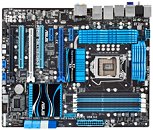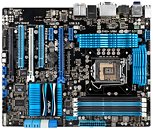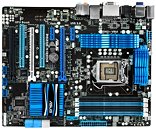Timeline time


A new Facebook is coming and bringing with it not only the largest change in design that we've seen so far, but also a fundamental shift in how your profile works and what it represents.?You will whinge. You will whine. Then you will accept, embrace, and move on with your "social graph".
But what can you expect from the new Facebook, the new feature it is calling Timeline, and everything else in-between?
We’ve gained access, loaded up as many of the new features as we can, and gone behind the curtain to see what's happening.
Timeline
Facebook Timeline?is your new profile page, the new Wall: it's all about you. There is still a Facebook homepage with your news feed on it, but click through to an individual person and the Timeline is what you get. Think of your Facebook life as a glossy magazine and you will have an idea of what your new profile will look like. It’s going to be picture heavy, memory heavy and allow you to quickly see a lot more of your past life than the current approach.
The big difference is that the boring news feed that resembles Twitter has gone from your profile page. Now activities, statuses and other things you’ve done in the past are based around a central line that goes all the way back to your birth. Of course, you probably don't have content on Facebook running back to your birth, but it knows your birthday, school dates and job dates, all of which will fall into place, begging to be illustrated.

Facebook has totally redesigned the idea of the profile page and its approach to your info. Now when you are confronted with someone's profile, you can see their entire history in photos, music, apps, comments and videos run out in the Timeline. The Timeline is split by a central line, to which boxes adhere in date order. These boxes are events, things that you have posted onto Facebook, be it uploading a photo or listening to a song on Spotify.
These events can be starred to feature them on your Timeline. This will mean they then span the whole width of your profile and as such attract more attention. It's a great way to show off your new car, baby or wedding photo for example. You can also curate the Timeline by hiding individual posts, perfect for those who want to clean up their profile in case the boss sees, or hiding details from a nosey girlfriend.?

On this Timeline is your Facebook life. How many friends you made in 2007, what you looked like in 2009, or the Places you visited. Absolutely everything you do through Facebook has a time stamp, and as such is positioned in date relation to everything else.?
If you fancy skipping quickly back through the Timeline to find a specific picture or post, you can do so by the date menu that sits to the right of the new Ticker (which we will talk about below). Click the 2010s for example and you will see everything from that decade, in years. The further back you go, the more compressed posts appear, the idea being that the more exciting information will be closer to the current date. You can, of course, expand anything in your entire Facebook history and explore posts from the first day you used the social network.

At the top of the Timeline is a fairly familiar update box. You can update your own Timeline here - post an update, photos, etc. - and if you are on a friend's Timeline, you can write and add elements, just as you could write on their Wall previously.
In some cases we've found things don't work quite as we'd like at the moment. Featuring photos that appear individually on your Timeline is simply a case of clicking the star, but at the moment you can't select a photo from an album to feature in the appropriate place - although you can from the Activity Log (which we talk about later). We also found that some YouTube videos we shared to Facebook didn't display in the Timeline, although they do appear back on the regular Facebook homepage which offers your news feed.?
The more you’ve used Facebook in the past the better your Timeline will look and the more exciting your life will appear to be. If you don't add much content to Facebook then expect your Timeline to be a rather dull reflection of your life.
The Timeline Cover
Key to making your new Timeline pretty is the ability to add something that Facebook calls the Cover. This is a single image to represent yourself, be it a picture of your cat, your favourite city, or just a big picture of you. If you’ve ever visited a site called About.me you’ll get the idea.

First impressions count and Facebook definitely wants you to use the Cover to get people excited about your profile. Changing your cover works just like changing a profile picture, which, by the way, sits on the bottom left of the Cover.
By clicking over the Cover you can then choose to use a picture that already exists on Facebook, upload, reposition or remove it. We will say that those used to uploading tiny photos to Facebook might want to consider something a bit more beefy on the pixel front to keep things looking sharp on your profile page.?
The Cover block: friends, photos, maps, essentials
The Cover sits in a block which heads your Timeline. As your Timeline is going to be constantly changing, those elements you want within easy reach fit neatly in your Cover block (a rather utilitarian name we've given it). It's here you'll find the index page of your friends, access to your photos, your Places maps, Likes and, with the press of the arrow, a second row that drops down to offer more links to important stuff. Here you can add apps, like Spotify, displaying their history in the same Timeline format. As you add more apps, more rows appear for you to fill.

It's all very neatly done and much better than running these details down in a column as before. At the same time, Facebook has picked up the idea of making everything graphical, so your friends are a mosaic of faces and not just static - they change as you come and go from your Timeline page.
Following these links through sees changes to how friends and photos are displayed. Friends are now displayed in a big colourful photo grid, with no sign of the list option that "old" Facebook offered. This means you can't just add friends from someone else's selection by running down the list and clicking the button, you have to visit that person's profile page, then friend them.
Click on Photos and again it all looks brighter and cleaner than before. Albums are presented across the top of the page, displaying only a single line unless you again drop down to see them all. Photos then run down the page and as before you can just keep scrolling down to see more and more. They are now split by years, fitting this new thread of time that runs through Facebook.?
Places hasn't really had the highest profile on Facebook in the past. A Check In would appear as an update, you could click through to the page of a particular location, but it wasn't very exciting. The new Facebook sees Maps - powered by Bing - finding their way into your Cover block. Clicking through then takes you to your personal map.

This map displays the Places you have checked in. Again you get the same sort of right-hand date menu that Timeline offers, so you can see where you were during a particular month or year. Places are divided into different categories, detailed across the bottom of the map, so you can view only places you went shopping. Unfortunately most of ours seem to be in the "Transport" section: a reflection of the amount of time we spend waiting for trains. Clicking on a location brings up the details, so you can click through to the page for that place as before. ?
Timeline apps
As you can imagine the idea of sharing basic information via the Timeline is going to be fascinating to many, including developers building apps. The Timeline opens up plentiful opportunities for innovative applications that take advantage of the new profile interaction and screen real estate.?
So far the app we have had the most time to play with is Spotify, which is totally awesome. The key to all this new Facebook Timeline design is making things as social as possible. The Open Graph app infrastructure is built for those who want to encourage sharing and discovery. Spotify takes full advantage of this.?

So too does the Guardian's application, which acts like a socially intelligent version of the newspaper's home page. It manages content by looking at your interests and those of your friends. This way only articles that are interesting to you will be sent your way. Shame it thought that Ryan Adams was of interest to us, but then again it is in beta so we expect a few errors. The app will also post information to your Timeline as well as allow the Facebook Ticker to exist on the Guardian website itself, informing you of what friends have read.?
Facebook music and Spotify
One of the most exciting elements of the Facebook redesign is the Spotify integration.?Music that appears on others' profile pages or your own can be played simply by clicking the play icon. The browser won't exit Facebook, but Spotify will open and begin playing the track
Tracks you have listened to will appear in your Timeline, just as any other information from other Facebook apps would. The special bit here, however, is that Facebook manages the tracks that appear, based on how many of your friends have listened to them - saving your profile from Spotify based spam. You can of course choose to publish something directly to the Timeline if you think it's worth people seeing, but all in all the Timeline curates itself on the app front.?

Those who pay for Spotify Premium will find their listening is without adverts, those who opt for the free version will need to listen to adverts. This is the same whether you listen to a track your friends are listening to or not.?

Spotify and Facebook are yet to roll out the Listen Live feature, which is a shame as it is one of the best parts to the new music setup. Once it does make an appearance, you will be able to listen to exactly what your friends are listening to?simultaneously. A comment box will appear while listening and multiple friends can comment and enjoy the same track. Think of it like the most social internet radio station experience to date.?
Artfinder
With over 900,000 developers signed up to the Facebook developer programme you can expect a huge variety of apps to start being integrated into your Timeline. Big names like Spotify, the Guardian, Deezer,?Netflix, and Artfinder, which we will look at here, have all jumped on board.
To show that it's not all news and music, Artfinder is set to launch something called the ArtStrip, a Timeline integrated image that is built up out of collections of art. Say, for example, you like pop art, then Artfinder will build an image from your pop art collection, each individual photo then being able to be previewed within the Timeline.?

This kind of innovation is a prime example of the sort of profile enrichment the new Facebook app infrastructure is going to offer. Expect things like Artfinder to help make your profile a lot more personal and provide more of an indication of who you are.
This is only the tip of the app-iceberg as far as Artfinder is concerned, considering this is the first in a series of apps built using colours to navigate artworks
To Facebook, now a verb
Rolled out just before the Timeline update, the new action options within apps will make doing things key in the future.?
Before F8, people were only able to Like, Recommend, or Share things outside of Facebook, back to?Facebook. Now, people can better describe their actions with standard terms like Watch, Read,?or Listen and, in the future, with more customised terms like Run, Cook, and Want.
Facebook says that these additions will help people describe what they do outside of Facebook in a more meaningful?way using the Facebook Open Graph:
"We think that this will lead to more relevant marketing and a better experience?for users,” says a spokesperson for the company.?
Activity Log
One of the new features of the new design is the Activity Log that is accessed by clicking on the big "View activity" button in your Cover block. Here you can quickly manage what you say and where it appears.
It’s considerably easier than previous methods Facebook has used to summarise activity. It behaves mostly like Twitter, showing when and what you have said in the past.?

It’s in this area that you can have the most direct control over exactly what people see when they click through onto your profile. You can do things like feature posts on your Timeline, hide them, make them public, send them to friends or delete them entirely. It runs back through your entire Facebook history, so you can easily pick a month from any year to see what you were doing.
Apps can also be controlled via Activity Log, allowing you to stop them accessing or publishing on your Timeline. You can also remove them or report spam.?

This one stop shop to make Facebook organisation easier has been long overdue, and we can tell very quickly that some of our more vain friends are going to be all over this like a bad rash.
Sponsored stories
All this new Facebook excitement doesn't come without adding a few improvements for the marketeers.?
Custom actions can be created and sent back to Facebook. Say, for example, when you click "watch", "listen", or "read" something on a website, this will be sent back to your profile. There is now total verb flexibility, so in theory you could create a button for just about everything, provided Facebook allows it.?
Stories themselves, connected to the new buttons, can be sponsored via brands. Let's say you decide you "want" a specific item of clothing, then this brand can promote this story to all your Facebook friends.
"Marketers can target ads and Sponsored Stories to people based on the stories they’ve?shared from apps. For example, Sony pictures can now reach out to people who have watched?the trailer for a specific movie with an ad on the movie release day or later the DVD release.?This functionality is only available through the Facebook (direct) sales team and the Ads API at?launch to ensure proper controls. We never share personally identifiable information with third?parties without your permission," a spokesman explained to Pocket-lint; hopefully allaying fears for those worried that the service might sell you out.?
This is essentially targeted advertising under the guise of your friends, those you trust and your loved ones. A much less bitter pill to swallow than an ad in the top right corner of the page.
Summing up
We know that people have reacted strongly to Facebook redesigns in the past and this is a dramatic change for your profile page. But it does look good, it looks personal and you will be able to control a lot of it. We like the fact you can put a Cover on the top to give your Timeline an identity and that you can feature the things that are important to you.
That might be a bit scary for some and in these early days, we've heard people asking questions about whether anyone will go back and add that birth photo or fill in those details back in the history of their life. The chattering classes have a distinct mistrust of the amount of information that Facebook wants to aggregate: who you are, where you've been, what you're doing, all your social interactions, music and photos.?
But let's not get too philosophical about things, for many, the integration of services to Facebook means you can do more, find more and see more from one place. Dressing up your profile in a Timeline gives every user the chance to curate a page that's all about them, in a Facebook that looks cleaner and slicker than previously.
Related links:
Tags: Facebook F8 Facebook Timeline Social networks Features Social networking











Facebook explored: New design features explained originally appeared on http://www.pocket-lint.com on Fri, 23 Sep 2011 17:28:00 +0100
VARIAN SEMICONDUCTOR EQUIPMENT ASSOCIATES UNITED ONLINE UNISYS TRIQUINT SEMICONDUCTOR TRIMBLE NAVIGATION LIMITED
 Wireless Goodness |
Wireless Goodness |  FCC | Email this | Comments
FCC | Email this | Comments












































